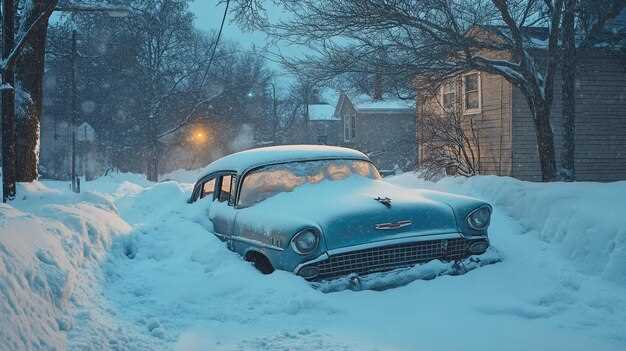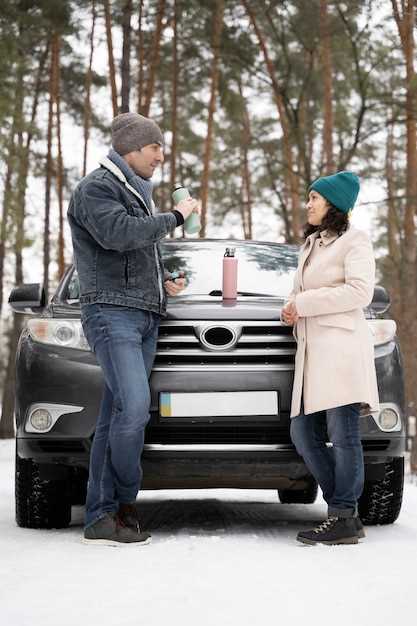
When the chill of winter approaches, classic car owners face the important task of preparing their vehicles for storage. Proper storage is essential to preserve the integrity and beauty of these timeless machines. Cold temperatures, snow, and humidity can wreak havoc on vehicles if appropriate measures aren’t taken to ensure safety during the off-season.
Understanding the specific needs of classic vehicles during this period is critical. Unlike modern cars, classic vehicles often require additional attention when it comes to storage. From selecting the right environment to implementing the best practices, every detail matters in safeguarding your prized possession.
In this article, we will outline essential tips for effective winter storage of classic vehicles. By following these guidelines, you can help ensure that your classic car remains in excellent condition, ready to hit the road come springtime. Preparing your vehicle properly can not only save you time and money but also extend the life of your beloved classic.
Pre-Storage Maintenance for Classic Cars

Before placing your classic vehicle into storage for the winter, it’s essential to perform a series of maintenance tasks to ensure its longevity and optimal condition. Start by thoroughly washing and waxing the car to remove dirt and contaminants that could damage the paint during the storage period.
Next, change the engine oil and filter. Old oil can contain contaminants that are harmful to engine components, so fresh oil will provide better protection while the vehicle is not in use. Additionally, consider replacing the fuel with a high-quality fuel treatment to prevent varnish buildup in the fuel system.
Check and top off all fluids, including coolant, brake fluid, and transmission fluid, to ensure that they are at the proper levels to prevent corrosion and leaks. Properly inflated tires should also be a priority; inflate them to the manufacturer’s recommended pressure to avoid flat spots during storage.
Battery maintenance is crucial. Either disconnect the battery and store it at an optimal temperature or use a battery maintainer to keep it charged. This will prevent battery drain and ensure your classic car is ready to go once you bring it out of storage.
Lastly, safeguard the interior by cleaning and conditioning the upholstery. Place silica gel packets or an odor absorber inside the vehicle to combat moisture and unpleasant smells. Cover the car with a breathable car cover to protect it from dust and humidity without trapping moisture underneath.
Optimal Environment for Winter Vehicle Storage
Creating an ideal environment for winter vehicle storage is crucial for preserving the condition of classic cars. The first factor to consider is temperature control. A consistent, moderate temperature helps prevent metal components from contracting and expanding, which can lead to cracking or warping. Ideally, the storage area should be maintained between 50°F and 70°F (10°C to 21°C).
Humidity levels also play a significant role in vehicle preservation. Excess moisture can lead to rust and mold growth, especially on sensitive areas such as upholstery and electronics. Aim for a relative humidity between 30% and 50%. Using a dehumidifier in enclosed spaces can help maintain these levels, ensuring that your classic vehicle stays dry.
Proper ventilation is essential for any storage location. A well-ventilated area allows for airflow, which reduces the risk of condensation buildup. Whether using a garage or a storage unit, ensure that air can circulate freely around the vehicle. This also helps dissipate any potentially harmful fumes from stored fluids.
Protective covers are another important aspect of winter vehicle storage. Investing in high-quality, breathable covers can shield your classic car from dust and debris while preventing moisture accumulation. Avoid using plastic covers as they trap moisture, leading to deterioration.
Additionally, choose a storage location free from direct sunlight to minimize UV damage to paint and interior materials. If indoor storage isn’t an option, consider utilizing portable carports or canopies that block harmful rays without restricting ventilation.
By ensuring a stable temperature, managing humidity, maintaining ventilation, and shielding your vehicle from environmental threats, you can create the optimal environment for winter vehicle storage, safeguarding your classic car for years to come.
Preparing Your Classic Car’s Interior and Exterior

Preparing your classic car’s interior and exterior for winter storage is essential to ensure its longevity and maintain its value. Start by thoroughly cleaning both the interior and exterior. Wash the car with a mild soap and water, removing dirt and grime that can damage the paint over time. Make sure to dry the car completely to prevent water spots and corrosion during the winter months.
Waxing the exterior is crucial, as it provides an additional layer of protection against harsh winter elements. Use a high-quality car wax that suits your vehicle’s paint type for optimal results. Pay close attention to any nooks and crannies where moisture can accumulate and lead to rust.
For the interior, vacuum thoroughly to eliminate dirt, debris, and dust that may cause odors or attract pests. Wipe down surfaces with a suitable cleaner, ensuring that leather or vinyl materials receive appropriate conditioning to prevent cracking in cold temperatures. Taking care of the dashboard and upholstery now will pay off when spring arrives.
Consider using moisture-absorbing products, such as silica gel packs or dehumidifiers, inside the car to prevent mold and mildew growth during storage. Covering the seats with breathable fabric will protect them while allowing air circulation.
Finally, be sure to close all windows tightly and check for any gaps where moisture can enter. A snug-fitting car cover designed for winter protection can additionally shield your classic vehicle from dust, moisture, and temperature fluctuations.




